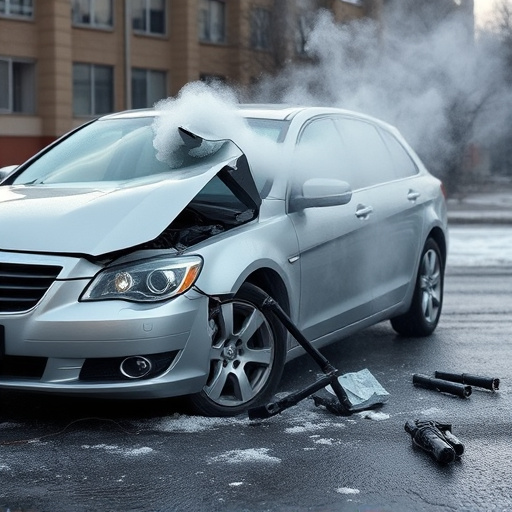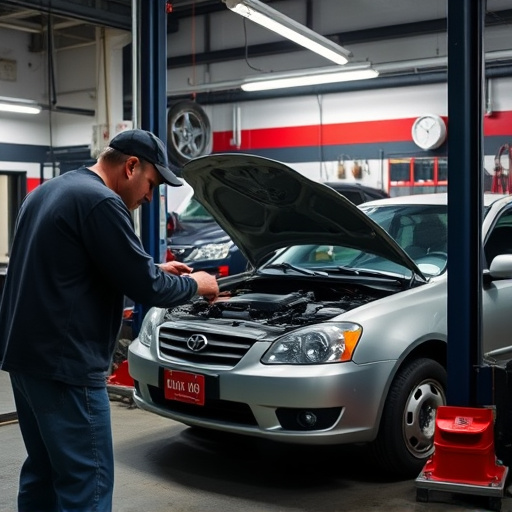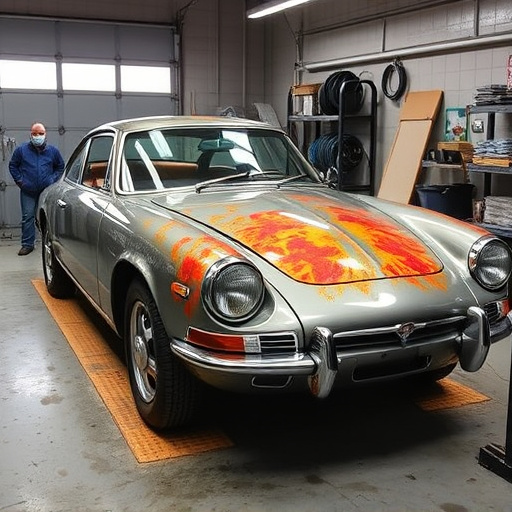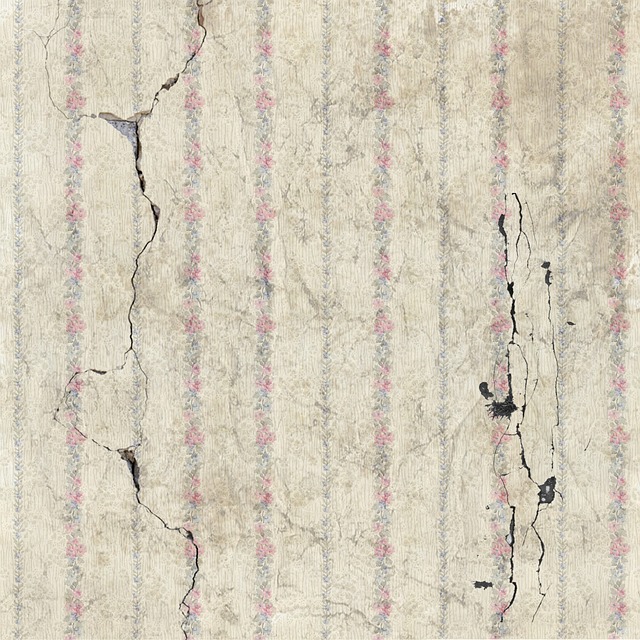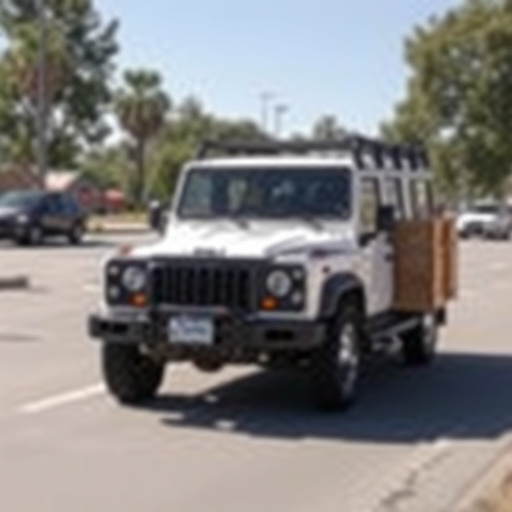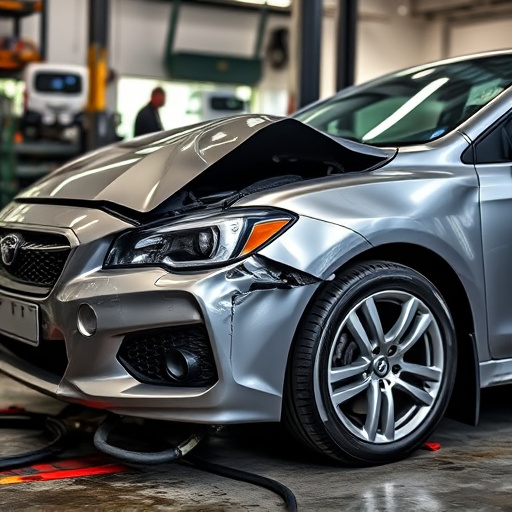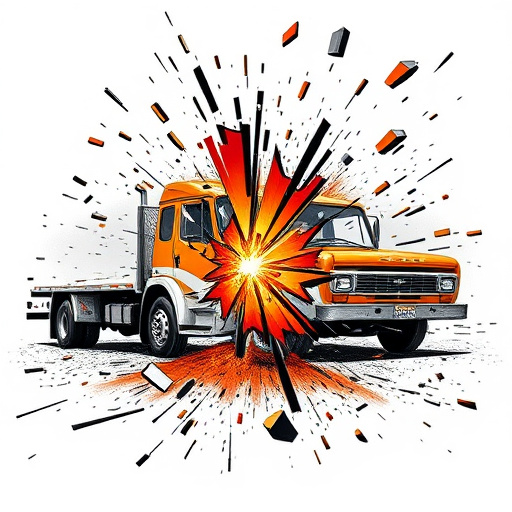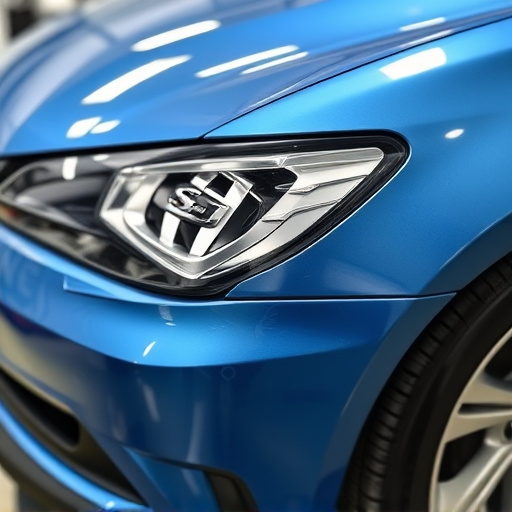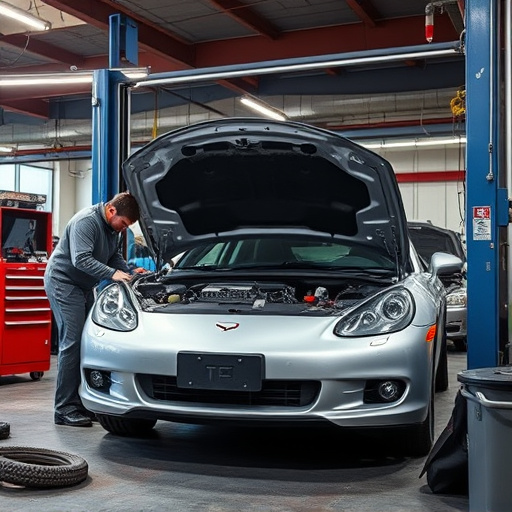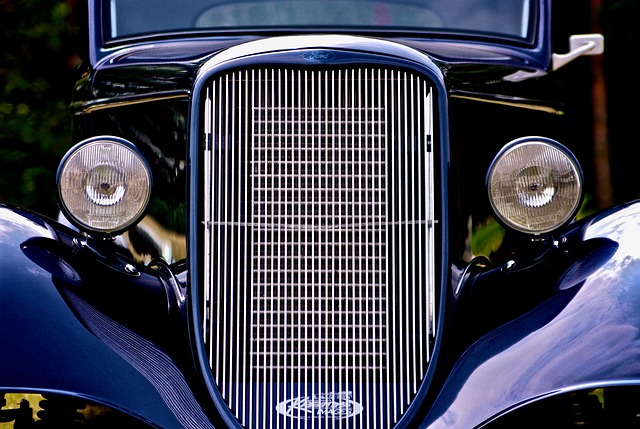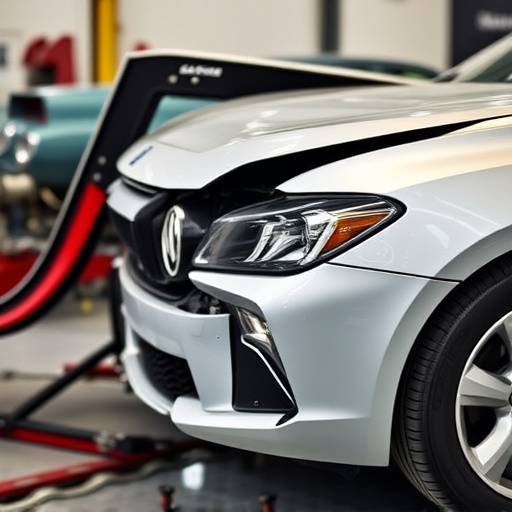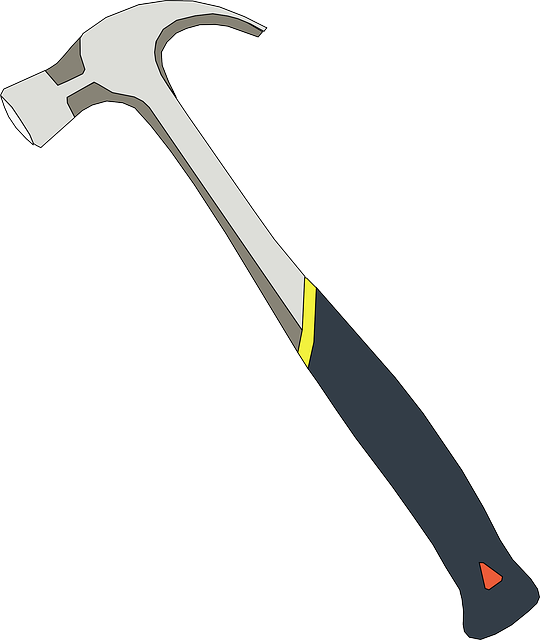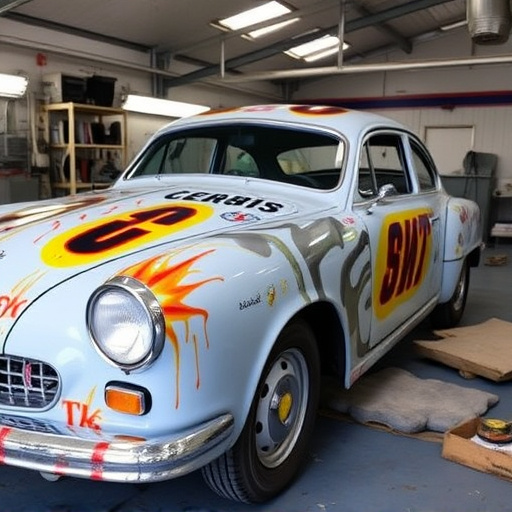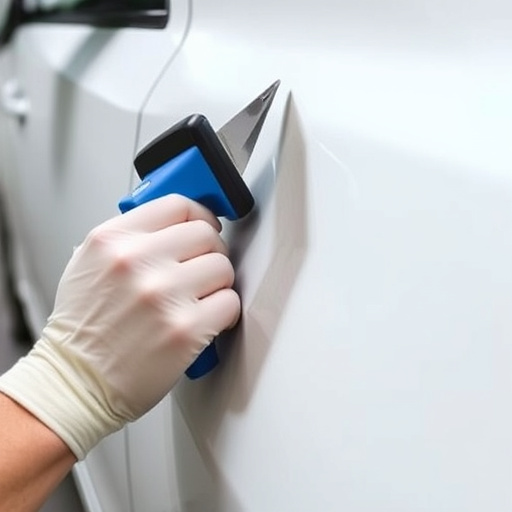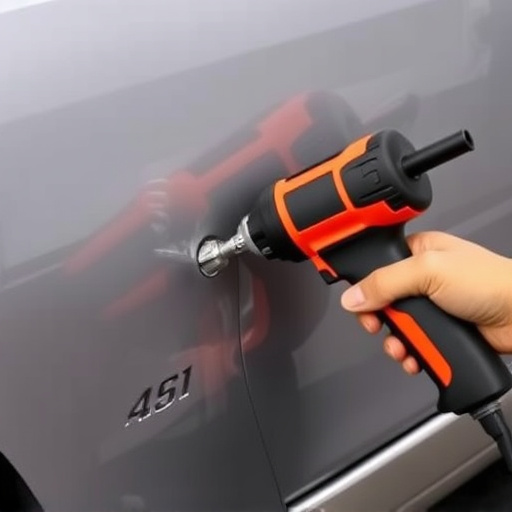Motorcycle collision repair is a specialized art requiring mechanical expertise and advanced techniques. Key steps include damage assessment, disassembly, structural integrity checks, metal straightening, part replacement, and precise alignment. Modern repair uses advanced materials and tools for safe, effective restoration, focusing on both performance and rider safety. Essential tools like specialized wrenches, grinders, paint booths, and dent repair equipment enable experts to match paints and handle intricate assembly, ensuring motorcycles meet pre-collision aesthetics and safety standards.
In the event of a motorcycle accident, effective collision repair is crucial for getting back on the road safely. This comprehensive guide delves into the key elements of motorcycle collision repair, equipping riders with essential knowledge. From understanding the basics and necessary tools to restoring safety and performance, we explore each critical step. Whether you’re a seasoned mechanic or an avid rider looking to learn, these insights will empower you to navigate the process effectively, ensuring your motorcycle is restored to its pre-accident condition.
- Understanding the Basics of Motorcycle Collision Repair
- Essential Tools and Equipment for Effective Repairs
- Restoring Safety and Performance After an Accident
Understanding the Basics of Motorcycle Collision Repair
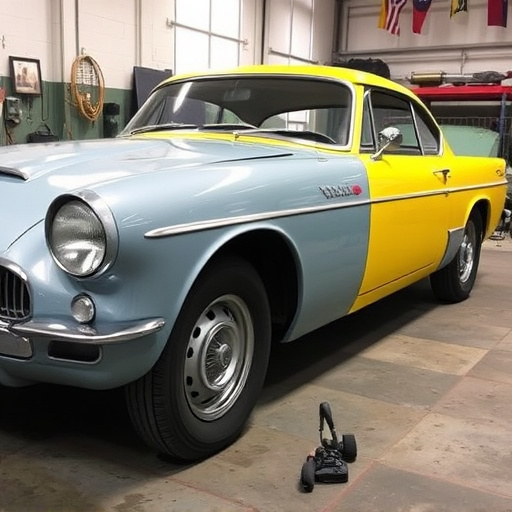
Motorcycle collision repair is an intricate process that involves more than just fixing a few scratches. It demands a deep understanding of both motorcycle mechanics and specialized repair techniques. Before diving into the specifics, it’s crucial to grasp the fundamentals of motorcycle collision repair. This includes assessing collision damage, disassembling affected components, and preparing the motorcycle for restoration.
The process begins with examining the bike thoroughly to identify structural damage, such as bent frames, broken parts, or compromised integrity. Unlike car body restoration, motorcycles have unique design elements and safety features that require tailored approaches. Skilled technicians then employ precision tools and techniques to straighten metal, replace damaged parts, and ensure proper alignment. This meticulous work is crucial for not just restoring functionality but also ensuring rider safety on the road. Considerations extend beyond classic car restoration; modern motorcycle collision repair integrates advanced materials and technologies to meet contemporary standards of safety and performance.
Essential Tools and Equipment for Effective Repairs
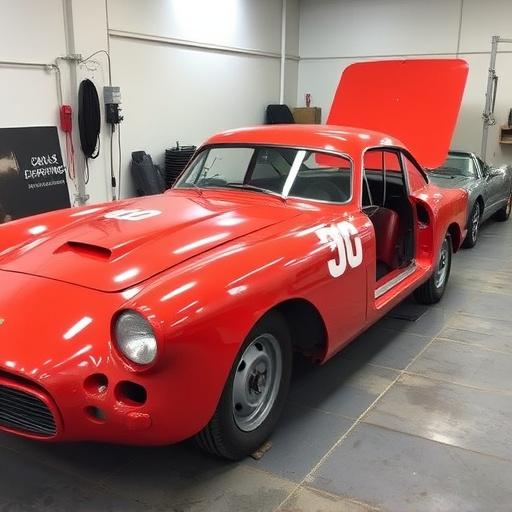
When it comes to motorcycle collision repair, having the right tools and equipment is paramount for ensuring effective and safe repairs. Essential items include specialized wrenches, socket sets, and ratchets tailored for the unique design of motorcycles. A comprehensive collection should also incorporate precision tools like screwdrivers, pliers, and angle grinders, which are crucial for intricate assembly tasks.
Additionally, a quality paint booth and associated equipment are vital for restoration projects. These tools enable professionals to expertly match and apply paints, ensuring the motorcycle regains its pre-collision aesthetics. Remember, access to reliable automotive repair services, including vehicle dent repair capabilities, can significantly streamline the process, especially for complex damage scenarios involving body panels and frameworks.
Restoring Safety and Performance After an Accident
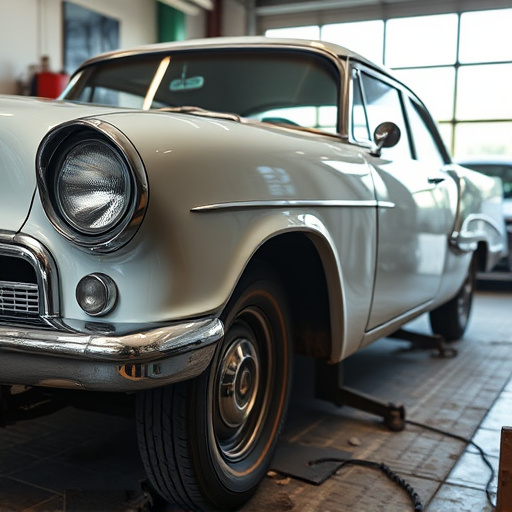
After a motorcycle accident, the focus shifts from immediate safety to meticulous restoration. Motorcycle collision repair involves more than just fixing visible dents; it’s about ensuring the bike meets its original performance standards and adheres to stringent safety regulations. Skilled technicians employ advanced techniques to assess and address structural damage, replace components like frames, engines, and brakes if necessary, and align wheels for optimal handling.
The process includes intricate dent repair to bring the bodywork back to its pre-accident condition. Modern collision repair services leverage specialized tools and precision techniques to minimize metal manipulation, preserving the bike’s integrity and aesthetics. Ultimately, a well-executed motorcycle collision repair not only restores the vehicle but also reassures riders that their safety and riding experience remain unparalleled.
Motorcycle collision repair is a complex process that requires a deep understanding of both mechanical and aesthetic restoration. By familiarizing yourself with the basics, investing in essential tools, and prioritizing safety and performance, you’ll be well-equipped to navigate the key elements of motorcycle collision repair. Remember, whether it’s your passion or profession, every repair is an opportunity to bring a bike back to its former glory, ensuring riders can hit the open road with confidence and peace of mind.
